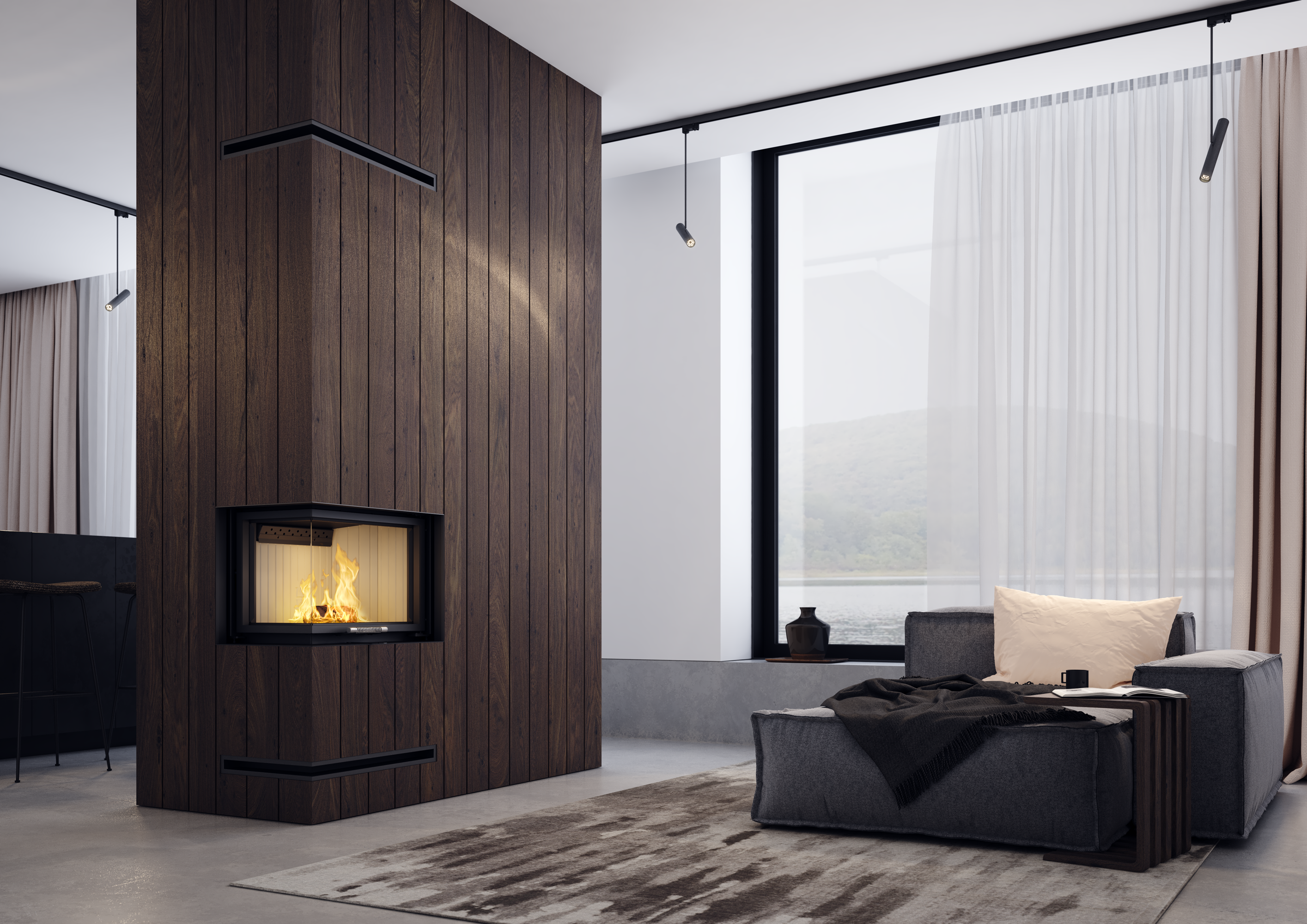
What is recuperation?
Recuperation is the exchange of air with simultaneous heat recovery. In the case of ventilation, the control device for this process is a recuperator - an electrical device ensuring air exchange in the building by exhausting used air while supplying freshly filtered air. During this exchange, the recuperator heats the supplied air through the built-in heat exchanger, using the heat of the exhaust air, thanks to which we recover heat in the building.
Fireplaces in the house with recuperation?
In order for a fireplace / free-standing stove to work in a house with recuperation, it must have a closed combustion chamber with its own air supply from the outside. Outdoor air is usually supplied through pipes under the floor, which are designed to supply fresh air from outside the house to the fireplace so that the fireplace does not draw air from the room in which it is located. Such a fireplace insert, properly installed, together with a recuperator is able to provide adequate thermal comfort without affecting the operation of the installation. Before buying, it is worth checking whether a given insert / free-standing stove has a manufacturer's declaration that it is suitable for use in this type of systems.
ATTENTION! In the case of fireplaces without a closed combustion chamber and fireplaces that take air from the room, there is a very high risk of smoke blowing out the fireplace (by drawing air through the recuperator), which in turn may lead to the risk of sooting. Such systems cannot function properly with such systems.
Advantages of a fireplace with recuperation?
heat recovery from the exhaust air (especially in winter, the rooms are not cooled with cold outside air, but heated by a recuperator);
- lower heating costs;
- better thermal comfort;
- constant ventilation of the premises;
- air filtration of dust.
What should you watch out for in the case of mechanical recuperation / ventilation?
When installing recuperation, it is worth considering cooperation with a proven company with experience (categorically you must not connect the installation yourself), because wrong connection of recuperation may affect its malfunction and the possibility of damage and ultimately bad work of the fireplace.
In the case of too close the location of the exhaust air outlet openings by the recuperator, despite the tightness of the fireplace, there may be a risk of back draft, i.e. drawing exhaust gases from the chimney into the room. This effect can also occur with wrong recuperation settings. Then the amount of air drawn from the room is much greater than the amount of air blown in, thus creating a negative pressure in the room drawing air from all available air supply, in this case from the fireplace.
During the installation of the fireplace and recuperation, other devices disturbing the pressure balance in the room should also be taken into account, such as e.g. an extractor hood in an open kitchen connected to the living room.
In case of any questions talk to our sales managers:
+48 800 880 030
k.styczen@stalko.com


